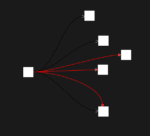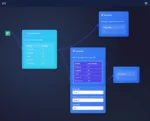As organizations strive to harness real-time data for competitive advantage, stateful stream processing has become a cornerstone for analytics, automation, and intelligent decision-making. At Dev3lop LLC, we empower clients to turn live events into actionable insights—whether that’s personalizing user experiences, detecting anomalies in IoT feeds, or optimizing supply chains with real-time metrics. Yet, scaling stateful stream processing is far from trivial. It requires a strategic blend of platform knowledge, architectural foresight, and deep understanding of both data velocity and volume. In this article, we’ll demystify the core concepts, challenges, and approaches necessary for success, building a bridge from technical nuance to executive priorities.
Understanding Stateful Stream Processing
Stateful stream processing refers to handling data streams where the outcome of computation depends on previously seen events. Unlike stateless processing—where every event is independent—stateful systems track contextual information, enabling operations like counting, sessionization, aggregates, and joins across event windows. This is crucial for applications ranging from fraud detection to user session analytics. Modern frameworks such as Apache Flink, Apache Beam, and Google Dataflow enable enterprise-grade stream analytics, but decision-makers must be aware of the underlying complexities, especially regarding event time semantics, windowing, consistency guarantees, and managing failure states for critical business processes.
If you’re exploring the nuances between tumbling, sliding, and other windowing techniques, or seeking comprehensive insights on big data technology fundamentals, understanding these foundational blocks is vital. At scale, even small design decisions in these areas can have outsized impacts on system throughput, latency, and operational maintainability. This is where trusted partners—like our expert team—help architect solutions aligned to your business outcomes.
Architecting for Scale: Key Patterns and Trade-Offs
Scaling stateful stream processing isn’t just about adding more servers—it’s about making smart architectural choices. Partitioning, sharding, and key distribution are fundamental to distributing stateful workloads while ensuring data integrity and performance. Yet, adapting these patterns to your business context demands expertise. Do you use a global state, localized state per partition, or a hybrid? How do you handle backpressure, out-of-order data, late arrivals, or exactly-once guarantees?
In practice, sophisticated pipelines may involve stream-table join implementation patterns or incorporate slowly changing dimensions as in modern SCD handling. Integrating these with cloud platforms amplifies the need for scalable, resilient, and compliant designs—areas where GCP Consulting Services can streamline your transformation. Critically, your team needs to weigh operational trade-offs: processing guarantees vs. performance, simplicity vs. flexibility, and managed vs. self-managed solutions. The right blend fuels sustainable innovation and long-term ROI.
Integrating Business Value and Data Governance
Powerful technology is only as valuable as the outcomes it enables. State management in stream processing creates new opportunities for business capability mapping and regulatory alignment. By organizing data assets smartly, with a robust data asset mapping registry, organizations unlock reusable building blocks and enhance collaboration across product lines and compliance teams. Furthermore, the surge in real-time analytics brings a sharp focus on data privacy—highlighting the importance of privacy-preserving record linkage techniques for sensitive or regulated scenarios.
From enriching social media streams for business insight to driving advanced analytics in verticals like museum visitor analytics, your stream solutions can be fine-tuned to maximize value. Leverage consistent versioning policies with semantic versioning for data schemas and APIs, and ensure your streaming data engineering slots seamlessly into your broader ecosystem—whether driving classic BI or powering cutting-edge AI applications. Let Dev3lop be your guide from ETL pipelines to continuous, real-time intelligence.
Conclusion: Orchestrating Real-Time Data for Innovation
Stateful stream processing is not simply an engineering trend but a strategic lever for organizations determined to lead in the data-driven future. From real-time supply chain optimization to personalized customer journeys, the ability to act on data in motion is rapidly becoming a competitive imperative. To succeed at scale, blend deep technical excellence with business acumen—choose partners who design for reliability, regulatory agility, and future-proof innovation. At Dev3lop LLC, we’re committed to helping you architect, implement, and evolve stateful stream processing solutions that propel your mission forward—securely, efficiently, and at scale.
Thank you for your support, follow DEV3LOPCOM, LLC on LinkedIn and YouTube.

























